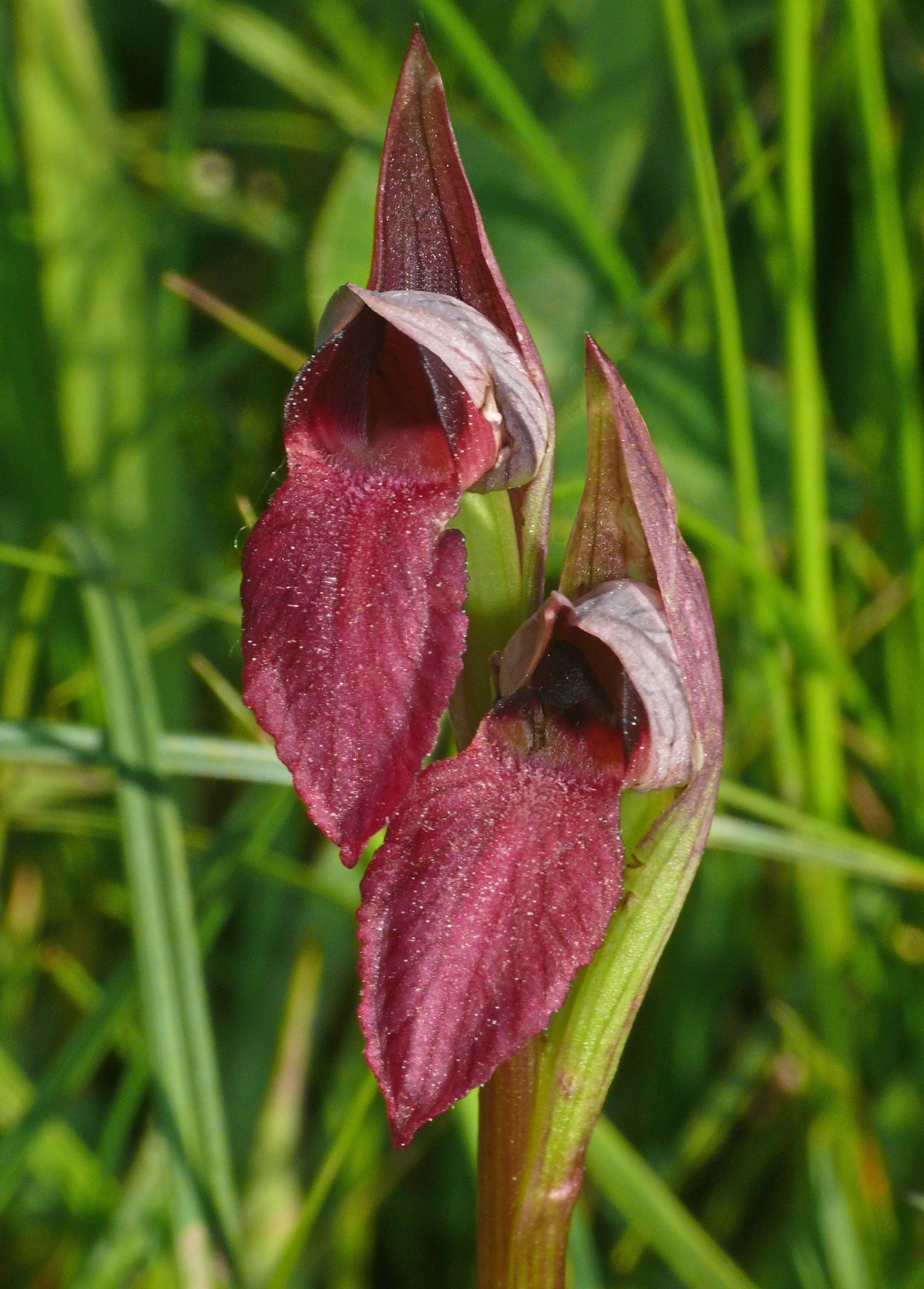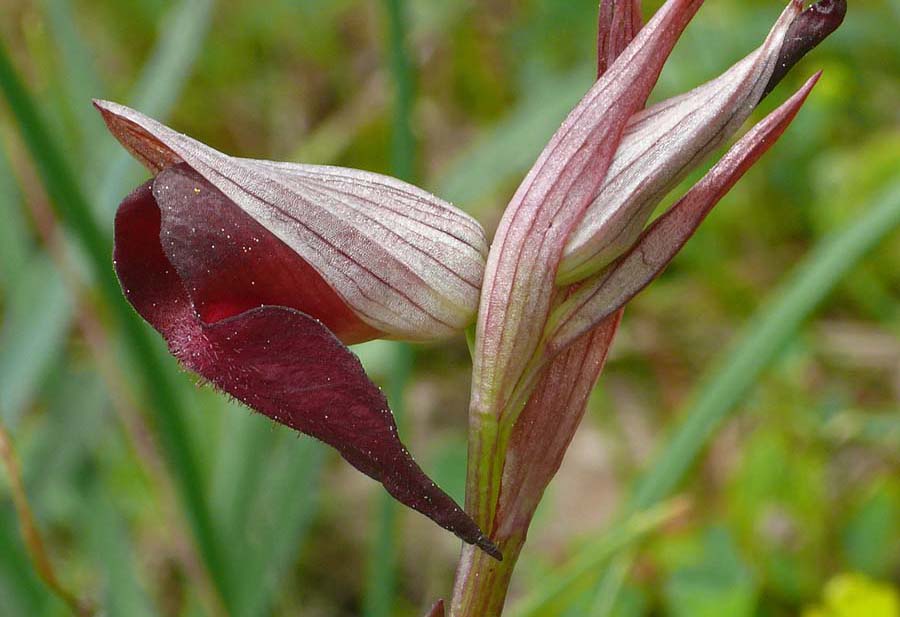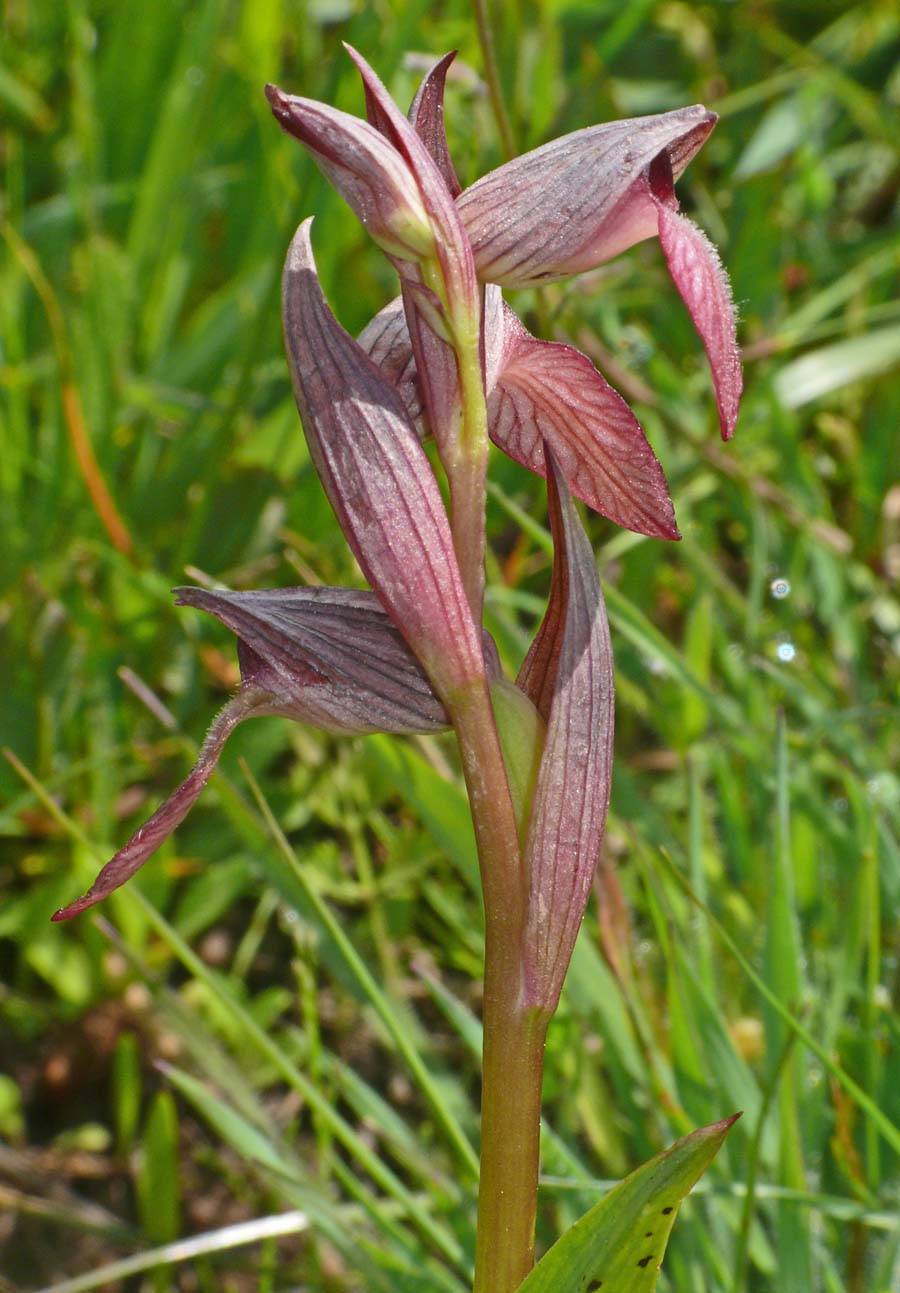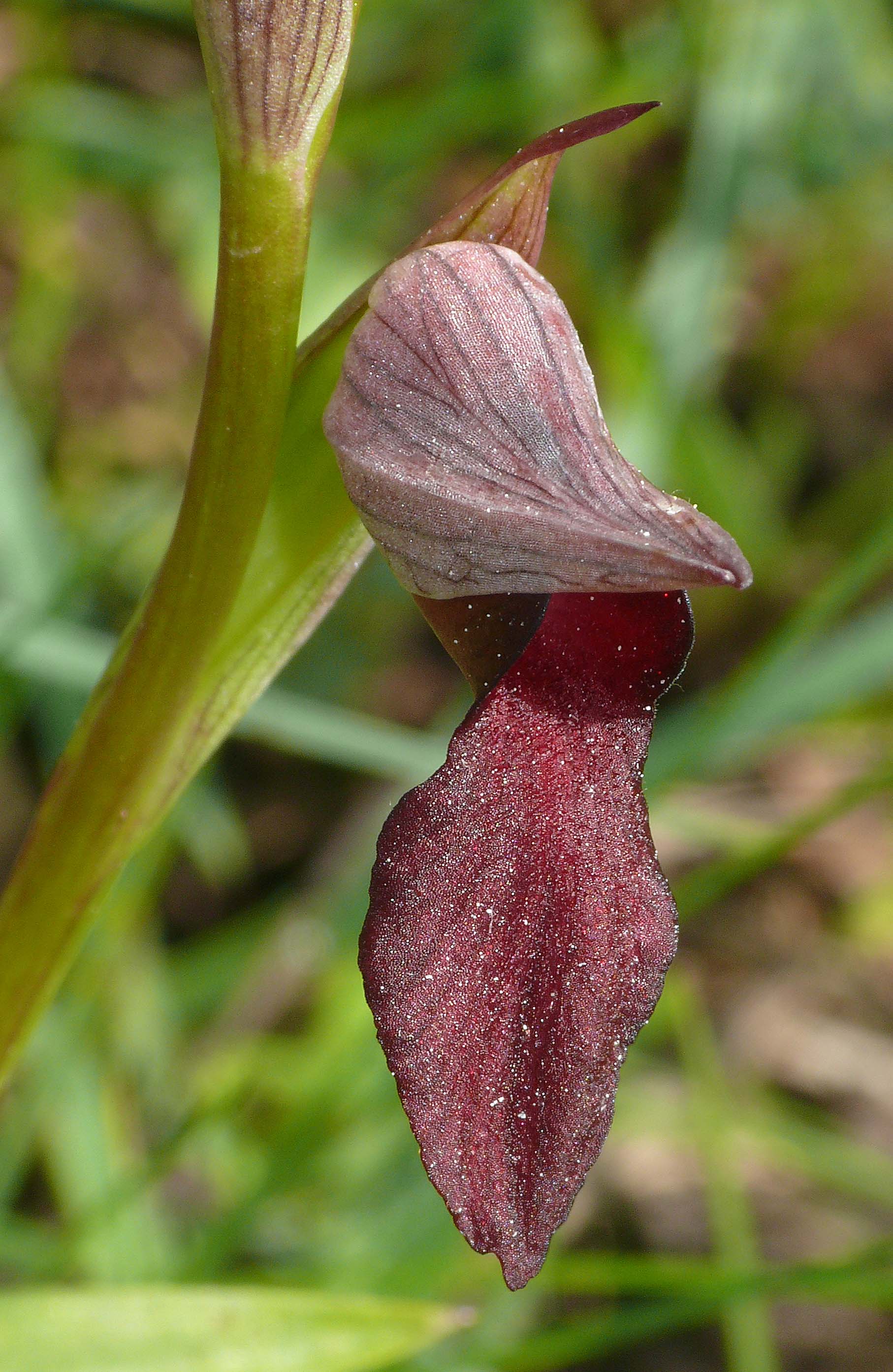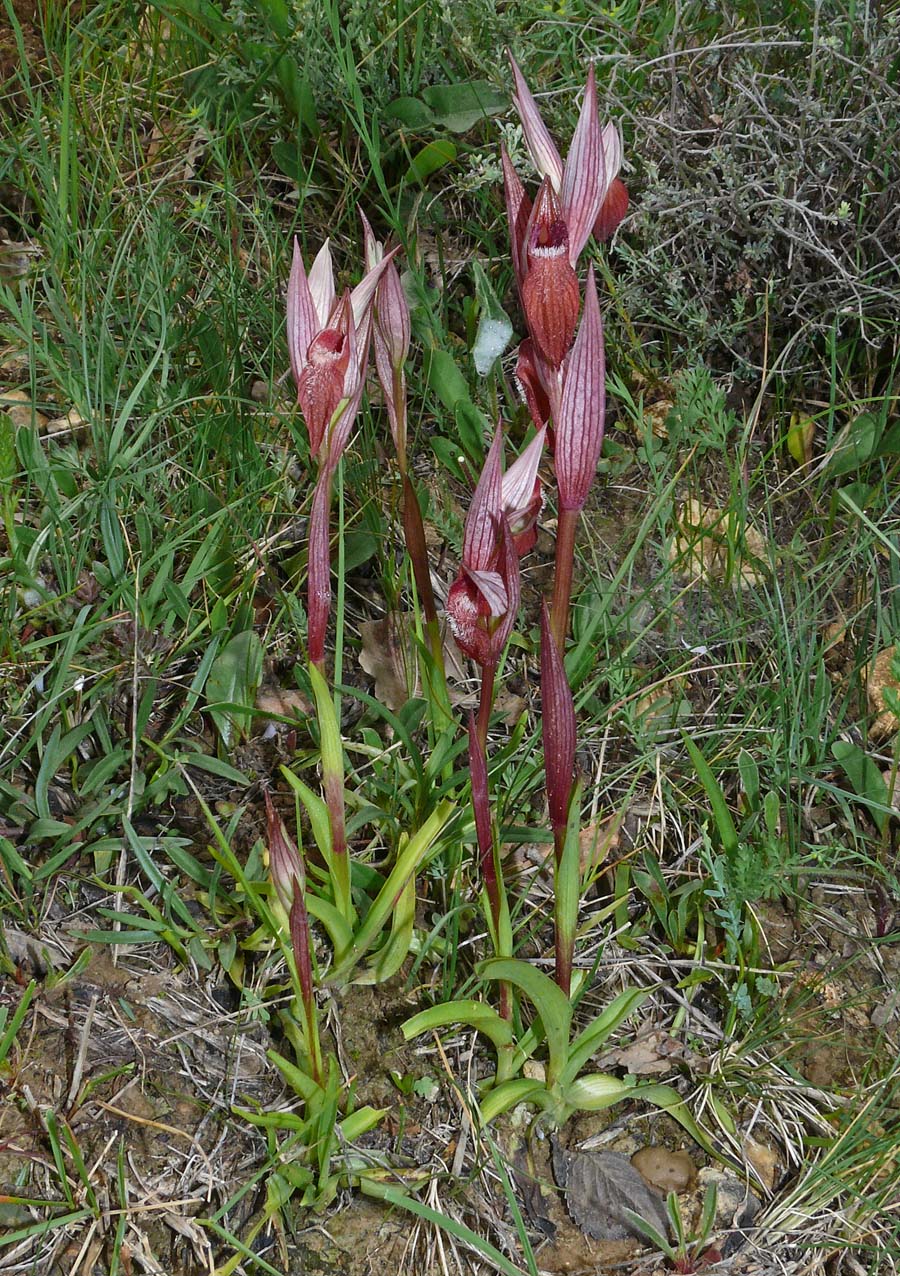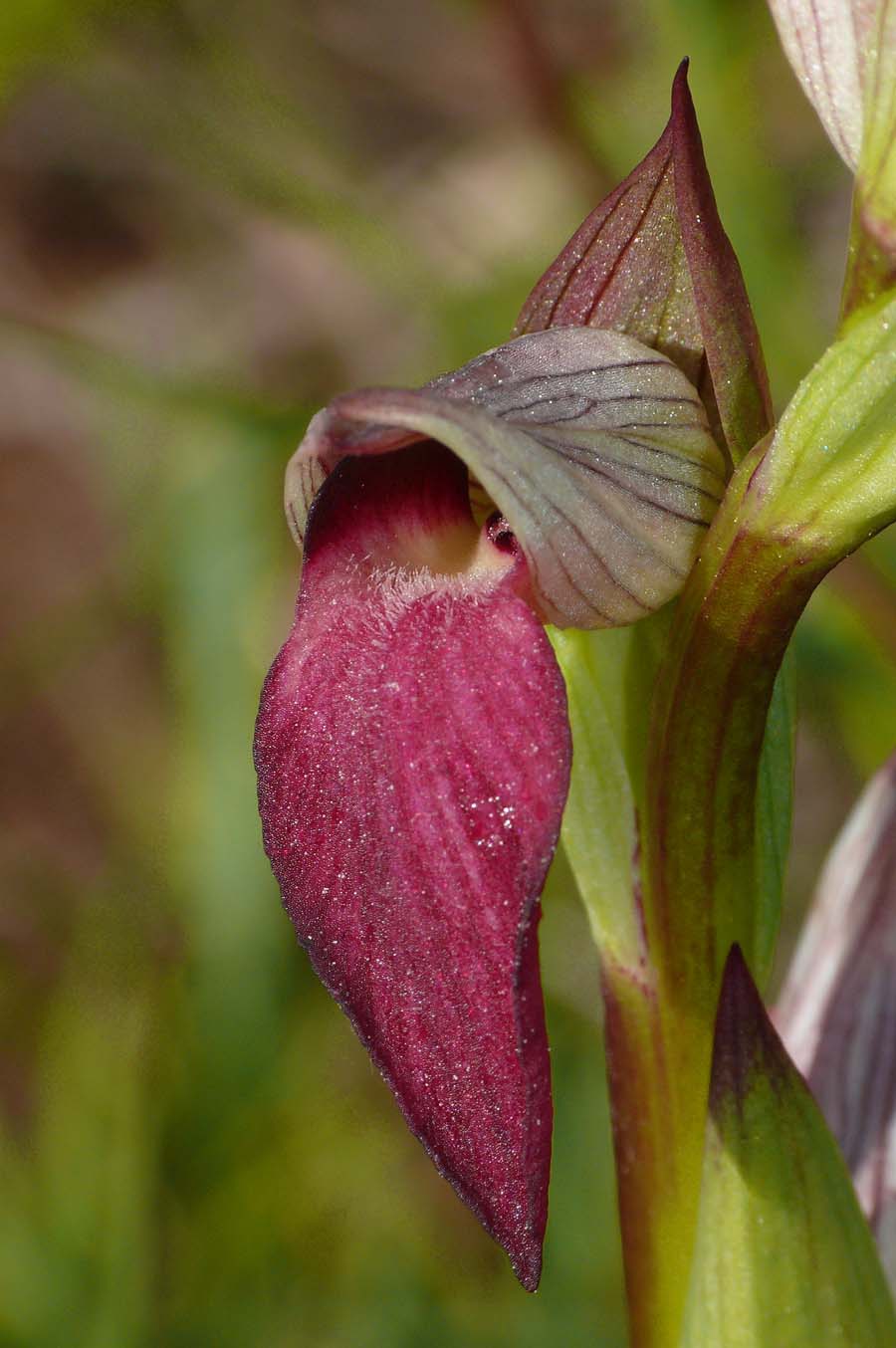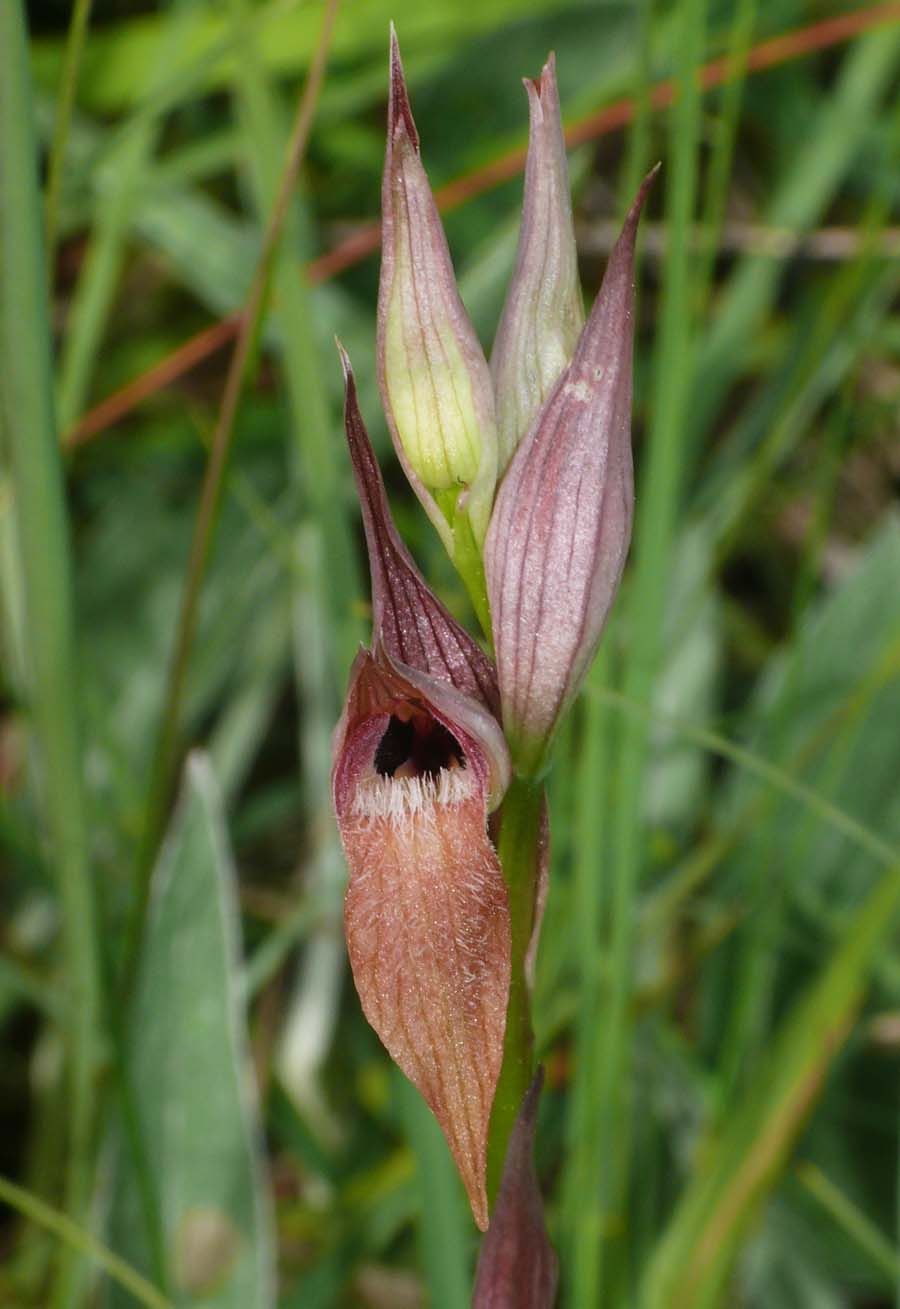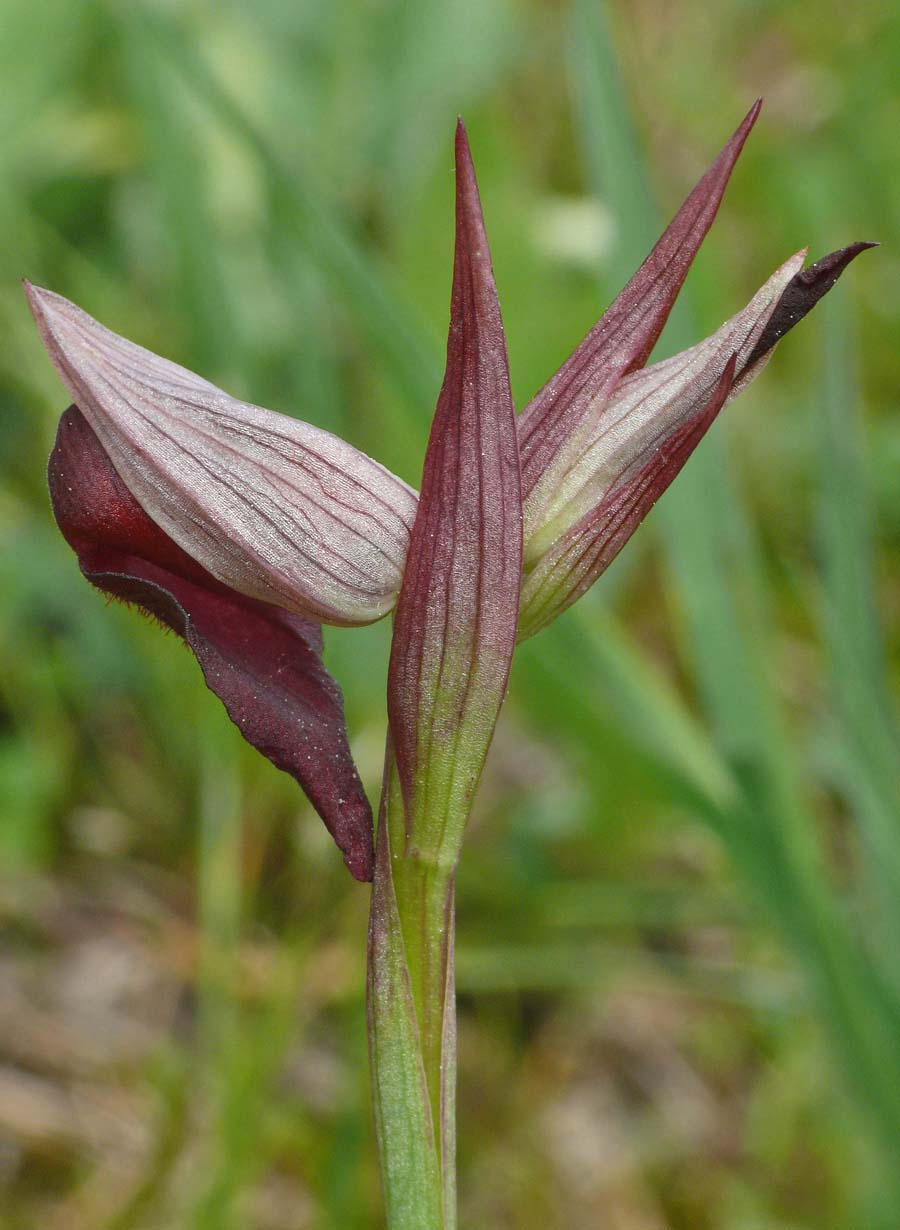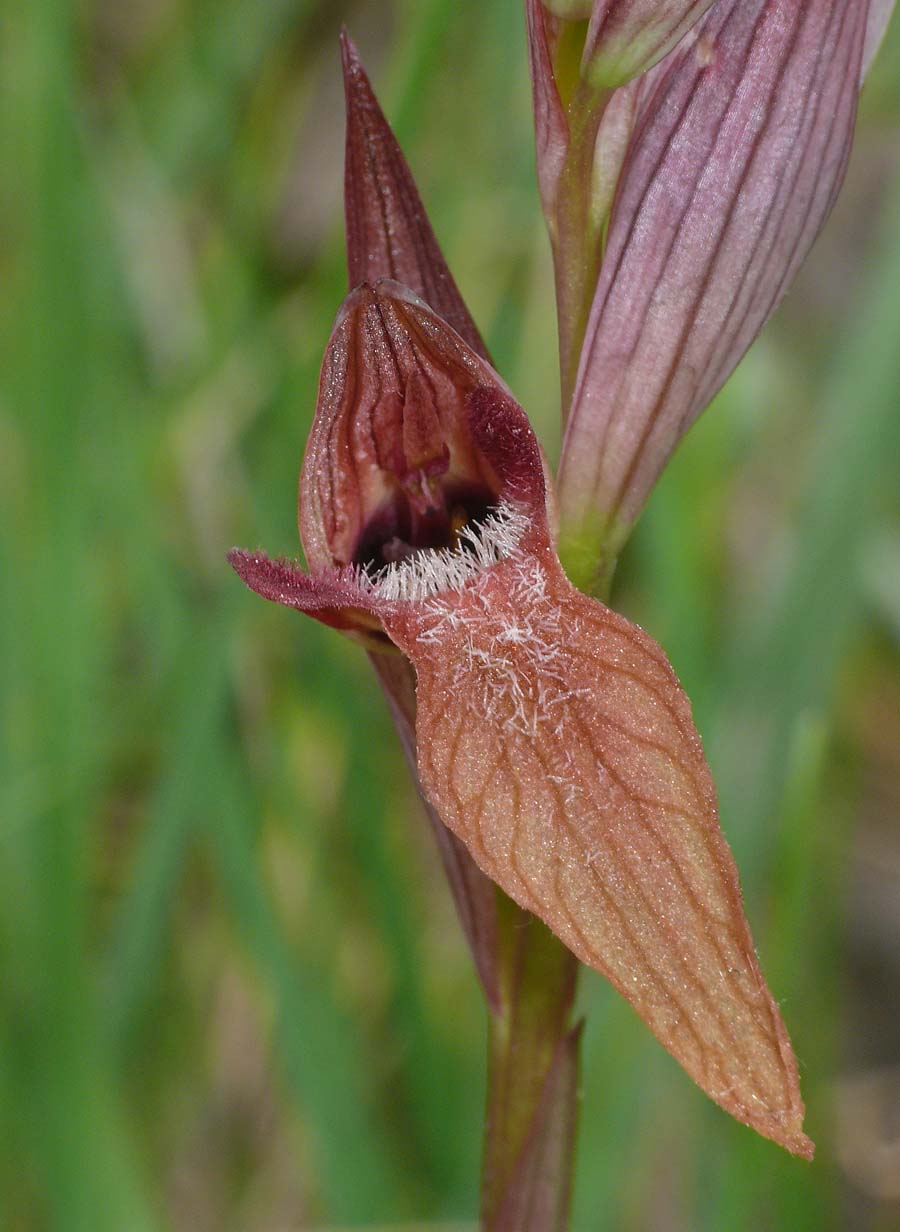S. olbia was first described by Verguin from
Var, southern France in 1907 and it takes its name from the ancient
Greek colony of Olbia in and around the area now called Hyeres. It's a
member of the S. lingua group of Serapias.
This species is endemic to southern France and more particularly to the coast and hinterland of the provinces of Var and Alpes-Maritimes where it shows a preference for a sunny position in damp habitats on acidic, siliceous or sandy soils. The moist conditions found in dune slacks, the borders of marshes and damp meadows are preferred but it will also tolerate significantly drier conditions, even garrigue when near the coast.
S. olbia is thought to be of hybrid origin with S. neglecta and S. lingua as the assumed and probably ancient progenitors. Its hybridogenous heritage can be noted in its appearance and so will often exhibit features that more strongly reflect the characteristics of one or other of its parents. Typically however it is a distinctive orchid carrying up to five individual flowers (more usually two) with grey lined hoods and a brick red, hairy epichile. As cautioned earlier, it will frequently betray its S. lingua roots and sport a pink or lighter coloured, less hirsute tongue.
Except in the wettest conditions, the leaves shrivel quite quickly, leaving a characteristically long stem up to 30cms high and typically with a pair of oppositely placed flowers at the top. S. olbia flowers in April and May. These pictures come from damp meadows around Bagnols-en-Foret, Var, dating from the first two weeks of May.
This species is endemic to southern France and more particularly to the coast and hinterland of the provinces of Var and Alpes-Maritimes where it shows a preference for a sunny position in damp habitats on acidic, siliceous or sandy soils. The moist conditions found in dune slacks, the borders of marshes and damp meadows are preferred but it will also tolerate significantly drier conditions, even garrigue when near the coast.
S. olbia is thought to be of hybrid origin with S. neglecta and S. lingua as the assumed and probably ancient progenitors. Its hybridogenous heritage can be noted in its appearance and so will often exhibit features that more strongly reflect the characteristics of one or other of its parents. Typically however it is a distinctive orchid carrying up to five individual flowers (more usually two) with grey lined hoods and a brick red, hairy epichile. As cautioned earlier, it will frequently betray its S. lingua roots and sport a pink or lighter coloured, less hirsute tongue.
Except in the wettest conditions, the leaves shrivel quite quickly, leaving a characteristically long stem up to 30cms high and typically with a pair of oppositely placed flowers at the top. S. olbia flowers in April and May. These pictures come from damp meadows around Bagnols-en-Foret, Var, dating from the first two weeks of May.
